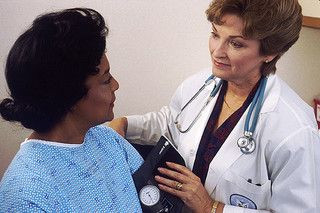Online Communication With Pharmacists Could Be Best Option For Controlling Blood Pressure Levels, Study Says

Online communication with pharmacists could help hypertension victims control their blood pressure levels. Researchers from the Seattle based health care provider, Group Health, led a year long study that analyzed the effects of constant communication with specialists and keeping blood pressure levels at bay, Reuters reported.
According to the Centers for Disease Control and Prevention, one in three American's suffer from high blood pressure bringing the tally to around 67 million U.S adults. Their data also suggests that less than half of the people with high blood pressure (47 percent) claim they have it under control.
Outside of a doctor's care, moderating blood pressure levels can be a daunting task simply because it's a round the clock job. Constant surveillance is needed to ensure your putting the right things into your body and getting the right type of physical activity.
778 study participants were grouped into three health care options they were randomly assigned to: group one received usual care, group two was taught how to self-monitor and group three was given online communication with their pharmacists.
Out of the 618 participants that remained after the year-long analysis blood pressure levels were considered moderate (under 140/90 milliliters of mercury) for 48 percent of those who received usual care, 52 percent for those who self monitored and 60 percent for those with online communication access.
Further examination revealed that communication with a pharmacist benefitted the patient even after it stopped. Researchers are also considering other methods including text and email alerts.
Group Health estimates the fee for this program could cost each patient around $400; however, lead researcher Dr. Beverley Green says this is relatively cheap for how effective it's proven to be.
The results of this study were published in the online journal JAMA.
Green B MD, MPH; Anderson M MS; Ralston J MD, MPH; Catz S PhD; Cook A, PhD, Blood Pressure 1 Year After Completion of Web-Based Pharmacist Care, JAMA, 2013
Published by Medicaldaily.com



























